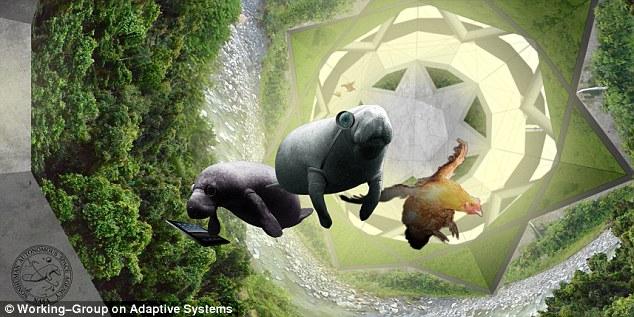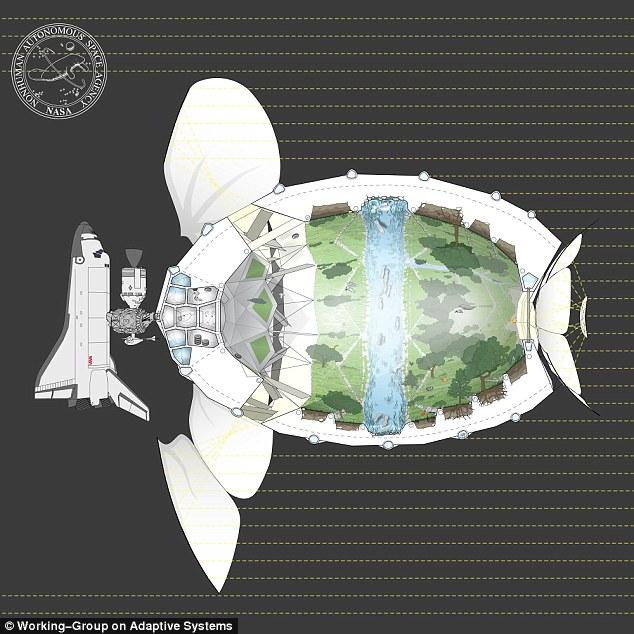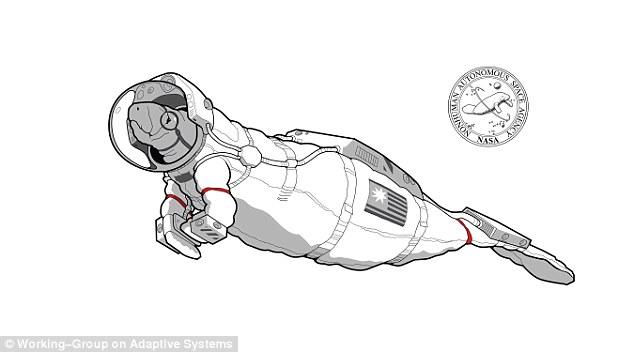 We humans just aren’t quite ready for living in and colonizing space yet. It’s a source of frustration for many eager space enthusiasts, but unfortunately there are just a few details holding us back — like, say, breathing, gravity, protection, and sustenance. As expansive as we’ve been able to become with vehicles such as space ships, submarines, boats, and planes, we have limits.
We humans just aren’t quite ready for living in and colonizing space yet. It’s a source of frustration for many eager space enthusiasts, but unfortunately there are just a few details holding us back — like, say, breathing, gravity, protection, and sustenance. As expansive as we’ve been able to become with vehicles such as space ships, submarines, boats, and planes, we have limits.
Maybe we should look beyond ourselves. What about animals that are used to living underwater and experiencing weightlessness on a constant basis? What about animals that aren’t as intelligent but are hearty, simple, and low maintenance? Perhaps there are Earth-dwellers more predisposed for life in space. Shocking, I know, but according to the Nonhuman Autonomous Space Agency, manatees and chickens may be a better option. Sounds a little crazy? Well, people originally thought the concept of being able to make and use a 3D printer to design and almost magically cause items from jewelry to medical devices to household items to appear on the desktop sounded pretty far-fetched too; in fact, one might have said we had a better chance of starting a chicken colony in space.
Historically, of course, we have sent a variety of animals (fruit flies, monkeys, and dogs, so far) into space but in protected spaceships, an d for limited travels. The Nonhuman Autonomous Space Agency, offering a carefree concept that’s only half serious, imagines a complex yet idyllic 3D printed habitat for animals like chickens and manatees.
d for limited travels. The Nonhuman Autonomous Space Agency, offering a carefree concept that’s only half serious, imagines a complex yet idyllic 3D printed habitat for animals like chickens and manatees.
In a reminder that the world is about more than just you and me, the agency, developed by Maryland’s Working Group on Adaptive Systems, is imagining a pastoral colony, based on something like south Florida, and named “The Lazy River,” which would be the center of the 3D printed space habitat featuring almost an aquarium type lifestyle with the river in the middle and windows strategically placed for sunlight reception. Further, the concept, referred to as an “open world speculative research project about the future of robots and animals in space,” encompasses other ideas such as:
- A rotating system to produce simulated gravity not unlike what we find on Mars, which is exponentially less than that of Earth.
- The ability, due to gravity, for chickens to jump, and manatees to crawl upward.
- Unique goggles to prevent desiccation of manatees’ eyes.
 Surely, while they might be able to go as far as living in space in a 3D printed habitat created by us, they can’t be expected to care for themselves indefinitely. No, that’s covered too: the animals would be assisted by robots, programmed for their care, as the Group envisions this as a comprehensive technological and biological ecosystem living in harmony and even going so far as to employ space probes that would not only be responsible for building out their habitat, but would also be constantly seeking resources in nearby space, as well. It’s envisioned that we could watch this utopian zoo being streamed directly from space to social media, engaging the world.
Surely, while they might be able to go as far as living in space in a 3D printed habitat created by us, they can’t be expected to care for themselves indefinitely. No, that’s covered too: the animals would be assisted by robots, programmed for their care, as the Group envisions this as a comprehensive technological and biological ecosystem living in harmony and even going so far as to employ space probes that would not only be responsible for building out their habitat, but would also be constantly seeking resources in nearby space, as well. It’s envisioned that we could watch this utopian zoo being streamed directly from space to social media, engaging the world.
With the use of 3D printing, the concept does have some scientific viability there from the sustainability angle, with the robots perhaps being able to 3D items in space regarding care and maintenance in the ‘colony.’
The idea, while definitely highly futuristic and offbeat, offers a glimpse into a fairy tale colony on another planet or perhaps the moon, tranquil, without conflict — but also without people. Were it a reality, it would certainly be fascinating to observe. As historically has been the case, often it just takes a small seed of a seemingly impossible idea to bloom into something that one day becomes almost the norm. The manatees and chickens may have quite the exciting space adventure to look forward to one day.
The Working Group on Adaptive Systems is a consulting firm in Baltimore that is centered around art and design. They focus on researching the connections between places, people, and things, and the world. Founded by Fred Scharmen in 2008, the group has worked on many different projects relating to urban environments in a variety of different sectors, using unique approaches for each project.
What do you think about this idea for using 3D printing to make a habitat for colonizing space with animals like manatees and chickens? Tell us your thoughts in the 3D Printing to Colonize Animals in Space forum over at 3DPB.com.

Subscribe to Our Email Newsletter
Stay up-to-date on all the latest news from the 3D printing industry and receive information and offers from third party vendors.
You May Also Like
3D Printing Unpeeled: New Arkema Material for HP, Saddle and Macro MEMS
A new Arkema material for MJF is said to reduce costs per part by up to 25% and have an 85% reusability ratio. HP 3D HR PA 12 S has been...
3D Printing News Briefs, January 20, 2024: FDM, LPBF, Underwater 3D Printer, Racing, & More
We’re starting off with a process certification in today’s 3D Printing News Briefs, and then moving on to research about solute trapping, laser powder bed fusion, and then moving on...
3D Printing Webinar and Event Roundup: December 3, 2023
We’ve got plenty of events and webinars coming up for you this week! Quickparts is having a Manufacturing Roadshow, America Makes is holding a Member Town Hall, Stratafest makes two...
Intuitive Machines Debuts $40M Hub for Lunar Ambitions and 3D Printing Tech
Best known for its pioneering work in lunar exploration and its development of the Nova-C lunar lander, Intuitive Machines (Nasdaq: LUNR) has marked yet another significant milestone. The leading space...































